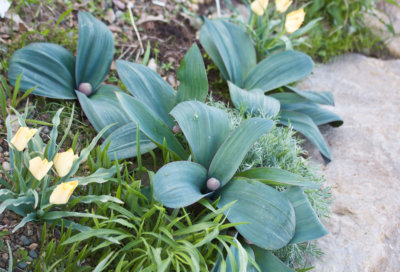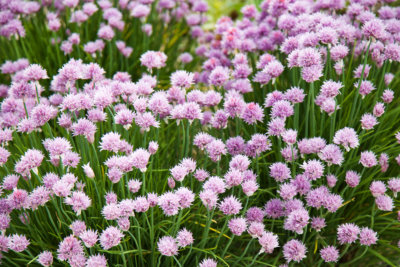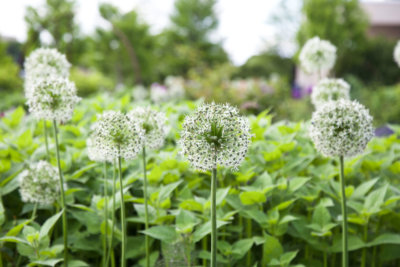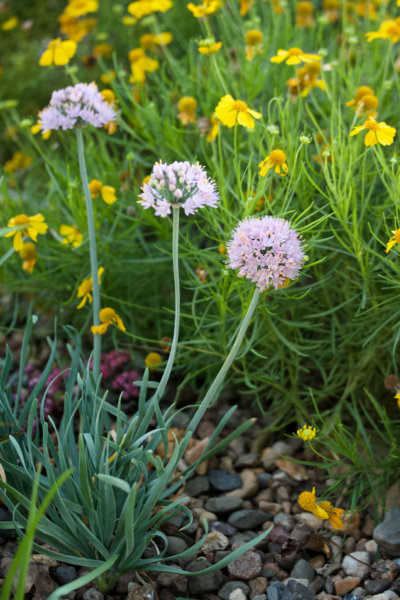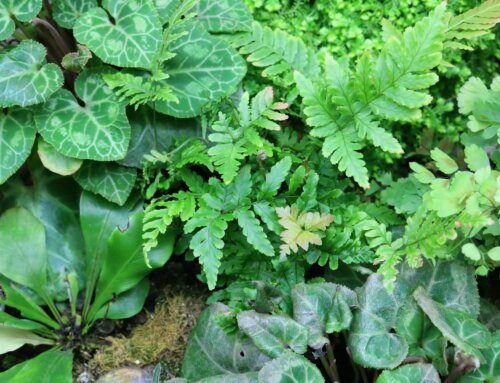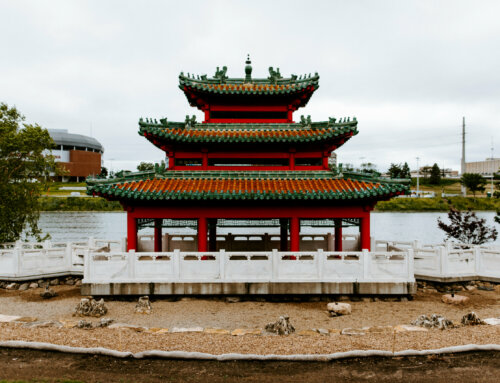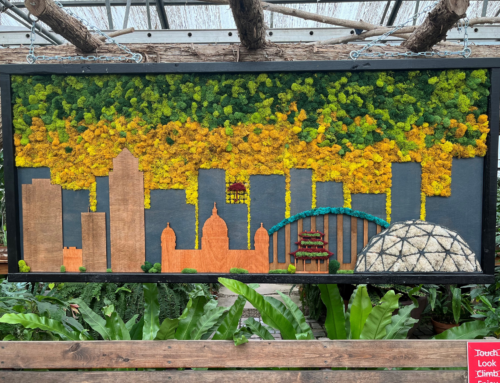7 Alliums for Blooms All Season Long
As plants that afford wild, contemporary style with clean, formal geometry, alliums have surged to raging levels of popularity in recent years. The Botanical Garden collection features 66 species and cultivars, with the number growing steadily with each year. During the full span of the growing season in Iowa, you can enjoy a kaleidoscope of floral diversity and the wide range of insects they attract when you plant them with open exposures and good drainage.
Since now is the time to plant alliums, check out these seven standbys for Iowa gardens.
April
1. Allium karataviense (Turkestan onion)
Of the alliums on this list, this may be the one you’ll grow mainly for its leaves, despite your fondness for its powder gray flowers later in May. Early to rise, this species breaks dormancy with fluted jade leaves that resemble a piece of ornate jewelry before unfolding like a clam to reveal a pearlescent bud that unfurls several weeks later.
May
2. Allium schoenoprasum (chives)
What’s not to love about the old-time herb so many of us first tasted on a slice of buttered toast? We grow a few varieties (including the Spring Garden Festival sell-out ‘Chivette’) that verge on staple in the Wells Fargo Rose Garden, Koehn Garden, and Rutledge Conifer Garden. The flowers are as edible as the fruits, pretty decorations for a spring soup or as part of a tabletop arrangement. In normal garden soils, alliums seem less likely to reseed, preferring the loose, gravelly opportunities at the edge of hardscapes instead.
3. Allium stipitatum ‘Mount Everest’ (Mount Everest ornamental onion)
Of all the big, bodacious alliums that paint the May garden, ‘Mount Everest’ is an elegant rejoinder to the loudness of the just-finished tulips. Planted in drifts throughout the Wells Fargo Rose Garden and the Koehn Garden, this tall white onion serves an opening act for the best of summer’s abundance. Planted in October, these bulbs arrive from the Netherlands nearly the size of softballs, requiring a subterranean footing to establish and persist.
June
4. Allium caeruleum (azure onion)
 Perhaps this should read with a caveat: This isn’t the usual A. caeruleum, though it’s fine enough despite the lack of a certain oomph. Our selection was shared by horticulturists at Denver Botanic Garden who obtained it from a local gardener who’d tended it for many years in her garden. It redefines the species for modern gardens, with tennis ball-sized orbs drenched in vivid caerulean blue. It’s not shy, bulking up quickly to form generous clumps that bloom with timely regularity in early June.
Perhaps this should read with a caveat: This isn’t the usual A. caeruleum, though it’s fine enough despite the lack of a certain oomph. Our selection was shared by horticulturists at Denver Botanic Garden who obtained it from a local gardener who’d tended it for many years in her garden. It redefines the species for modern gardens, with tennis ball-sized orbs drenched in vivid caerulean blue. It’s not shy, bulking up quickly to form generous clumps that bloom with timely regularity in early June.
July
5. Allium sphaerocephalon (drumstick allium)
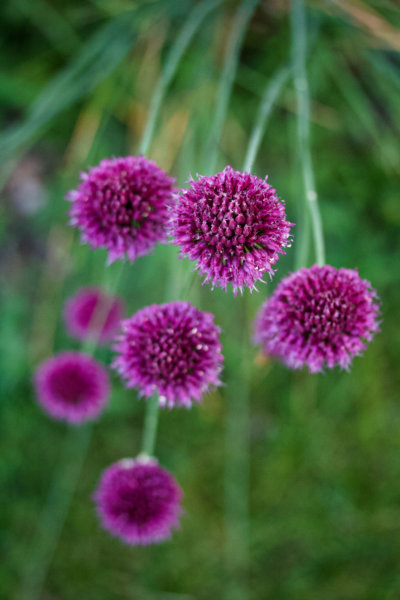 This Fourth of July milestone marker shifts the mood from the greenness of June to the hot colors of later summer. Arising on tall, leafless stems to float among other plants, its easy garden presence adds vibrancy to almost any planting, even if it does require replanting every few years to preserve the effect.
This Fourth of July milestone marker shifts the mood from the greenness of June to the hot colors of later summer. Arising on tall, leafless stems to float among other plants, its easy garden presence adds vibrancy to almost any planting, even if it does require replanting every few years to preserve the effect.
August
6. Allium cernuum (nodding onion)
The common name fittingly describes the shy, peekaboo inflorescences of this native, late-summer flowering allium. Midwestern allium growers selected colors in shades of pink (‘Wine Drop’) or white (‘Falling Stars’) to round out the dry garden palette. Perfect for a gravel garden or hellstrip edge in full sun, this species will seed around modestly in gritty situations where its jet-black seeds can find an undisturbed place to take root.
September and October
7. Allium thunbergii ‘Ozawa’ (Ozawa Japanese onion)
Look closely along one of the flagstone paths in the Rutledge Conifer Garden in mid-autumn and you’ll find a magenta-colored sprite holding forth, representing the last of its tribe in our central Iowa garden. This final flourish on a somewhat modest scale is worth the effort to kneel in wonderment. Easy and carefree with ample drainage, it’s a stellar choice for a trough in full sun or any attempt at gardening in miniature.

